China-exclusive RTX 5090D dominates in 3DMark benchmark records - Galax HOF edition eclipses RTX 5090 challengers
The HOF's dual 16-pin connectors could explain its triumphs.
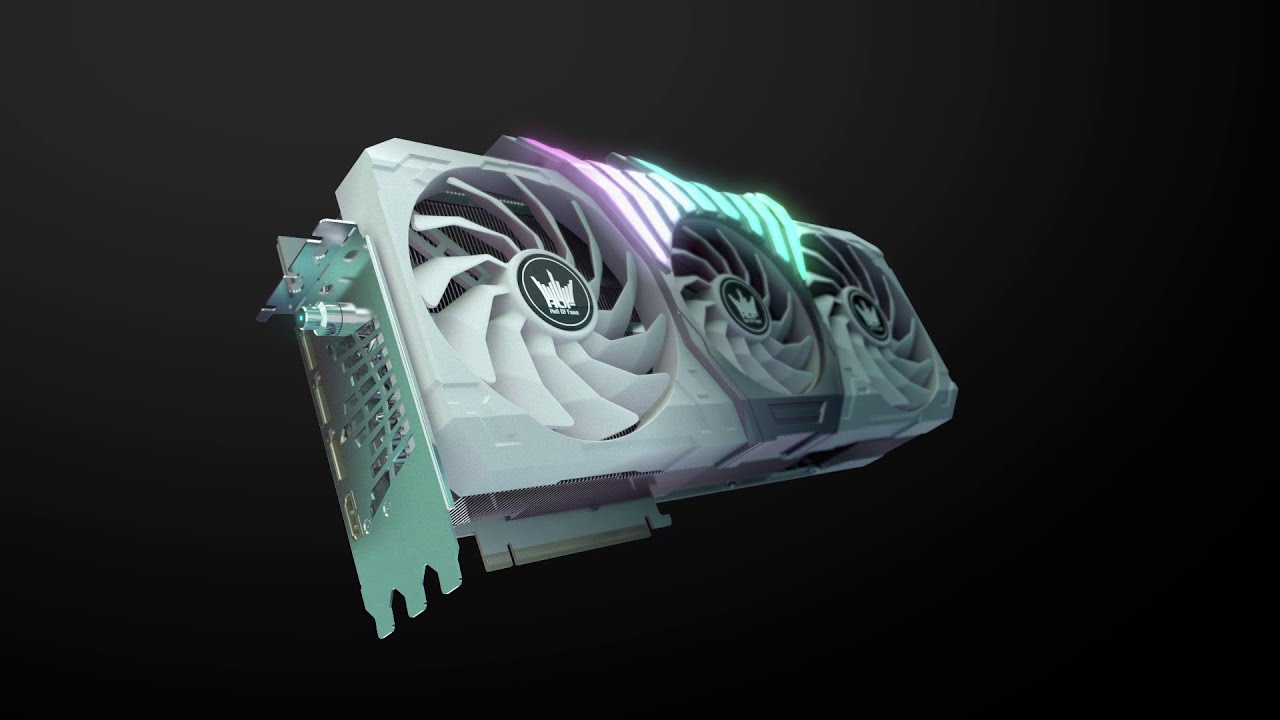
Recently, we noticed a trend at HWBot, a site that tracks CPU/GPU overclocking records, where the China-exclusive RTX 5090D now commands the top spots across various single-GPU world records. This extends to the entire 3DMark suite, including Port Royal, Vantage Extreme, Time Spy Extreme, and Fire Strike Extreme. Why isn't a fully-featured RTX 5090 dominating the top of these tables? Well, the consistent element we see is the use of the RTX 5090D HOF OC Lab edition, an unannounced GPU from Galax that is known to feature a dual 16-pin design for elevated TGPs.
These Hall Of Fame edition GPUs offer a sophisticated power delivery system with customized vBIOS that can often be configured to deliver over 1,000W of power without board customizations. The PCBs of these GPUs can also be equipped with an LN2/Liquid Helium pot for extreme overclocking, which is probably the method employed by OGS and Rauf, both of whom are renowned overclockers, to achieve these results.
Across the handful of results we surveyed, the RTX 5090D leads the charts when limited to single-GPU setups. Multi-GPU systems featuring several workstation/server-grade GPUs can potentially achieve higher overall scores, so we are not considering those configurations. Either way, despite the firmware limiting its AI TOPS by nearly 30%, the RTX 5090D ironically bests its global counterpart in the vast majority of benchmarks.
The top two contenders, Rauf and OGS, are actively fighting for the number-one spot, though OGS holds a narrow lead in most test results. The RTX 5090D saw a peak clock speed of 3.53 GHz in Port Royal with one of OGS' test benches, most of which were equipped with a hefty 1500W/1600W power supply. While our test data is limited to games rather than synthetic/stress tests, the RTX 5090 Founders Edition, for context, averages 2.7 GHz - 2.8 GHz in the majority of titles.
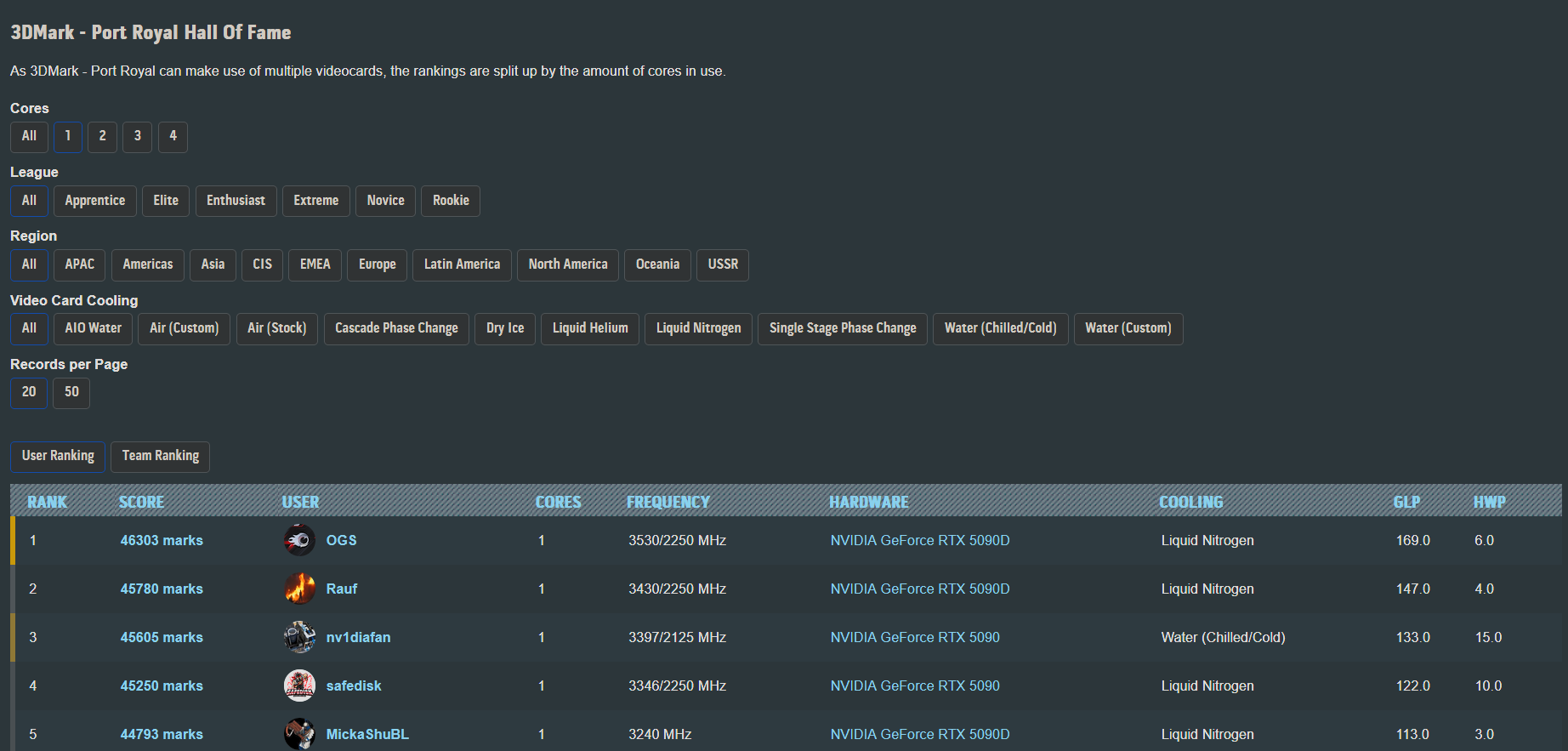
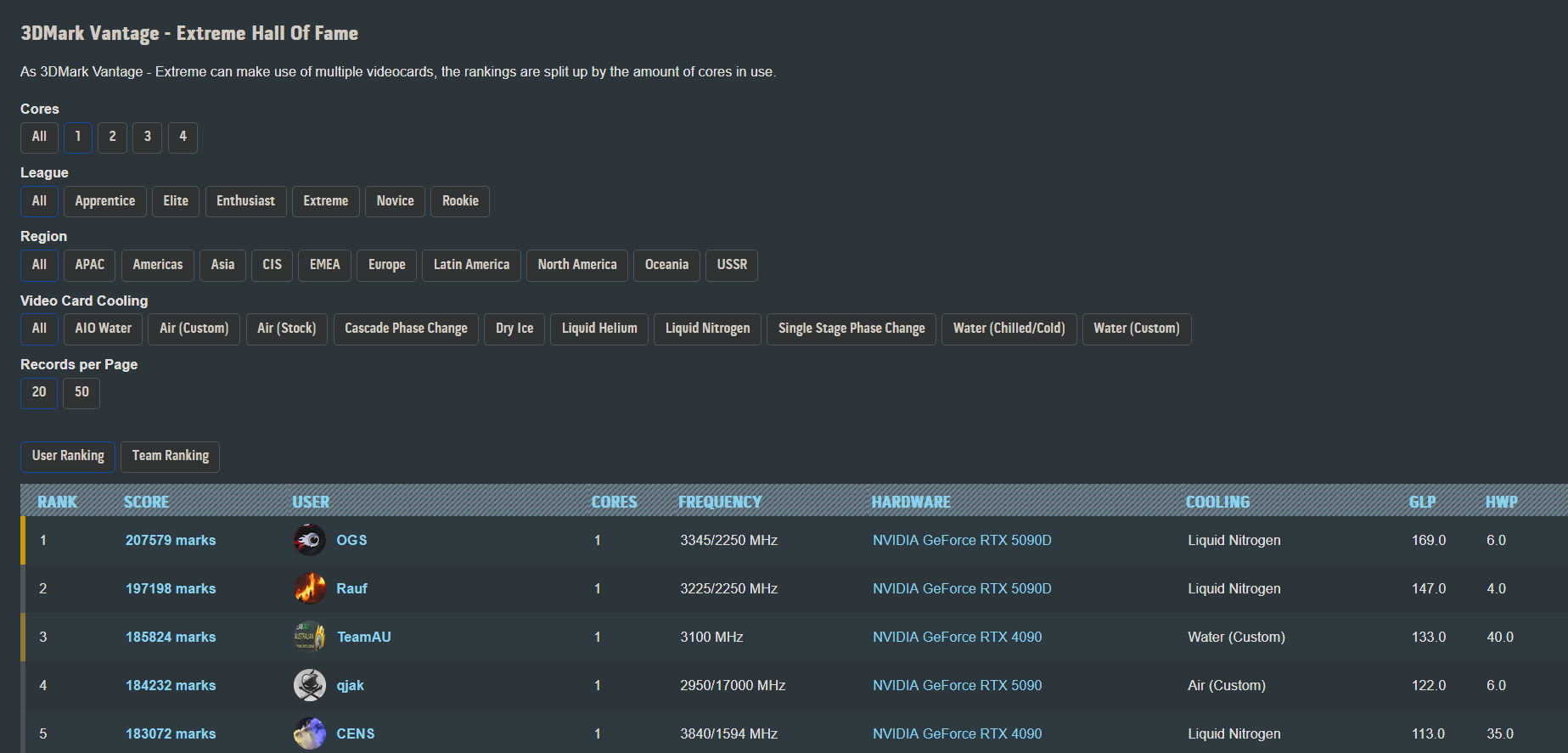
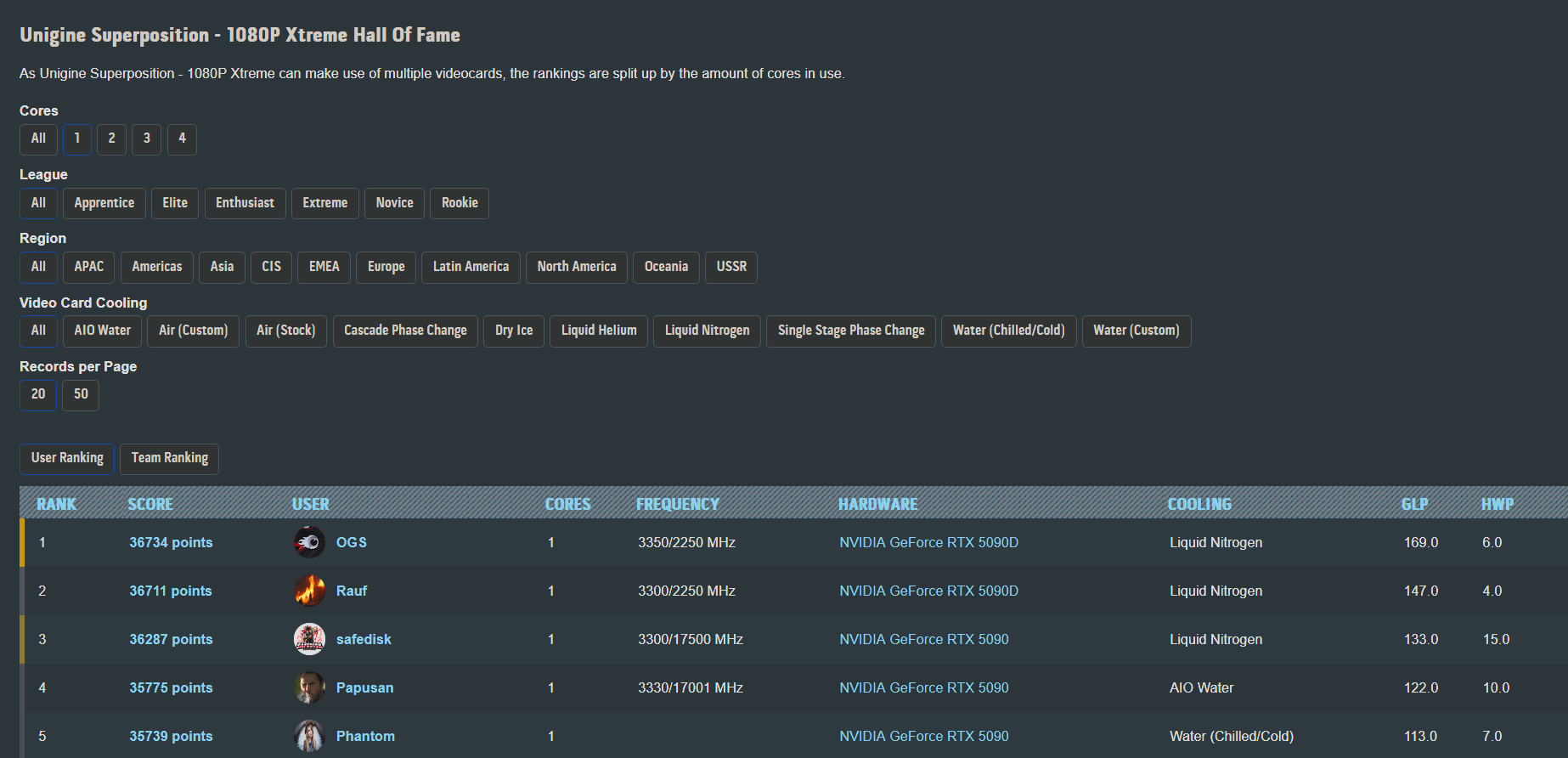
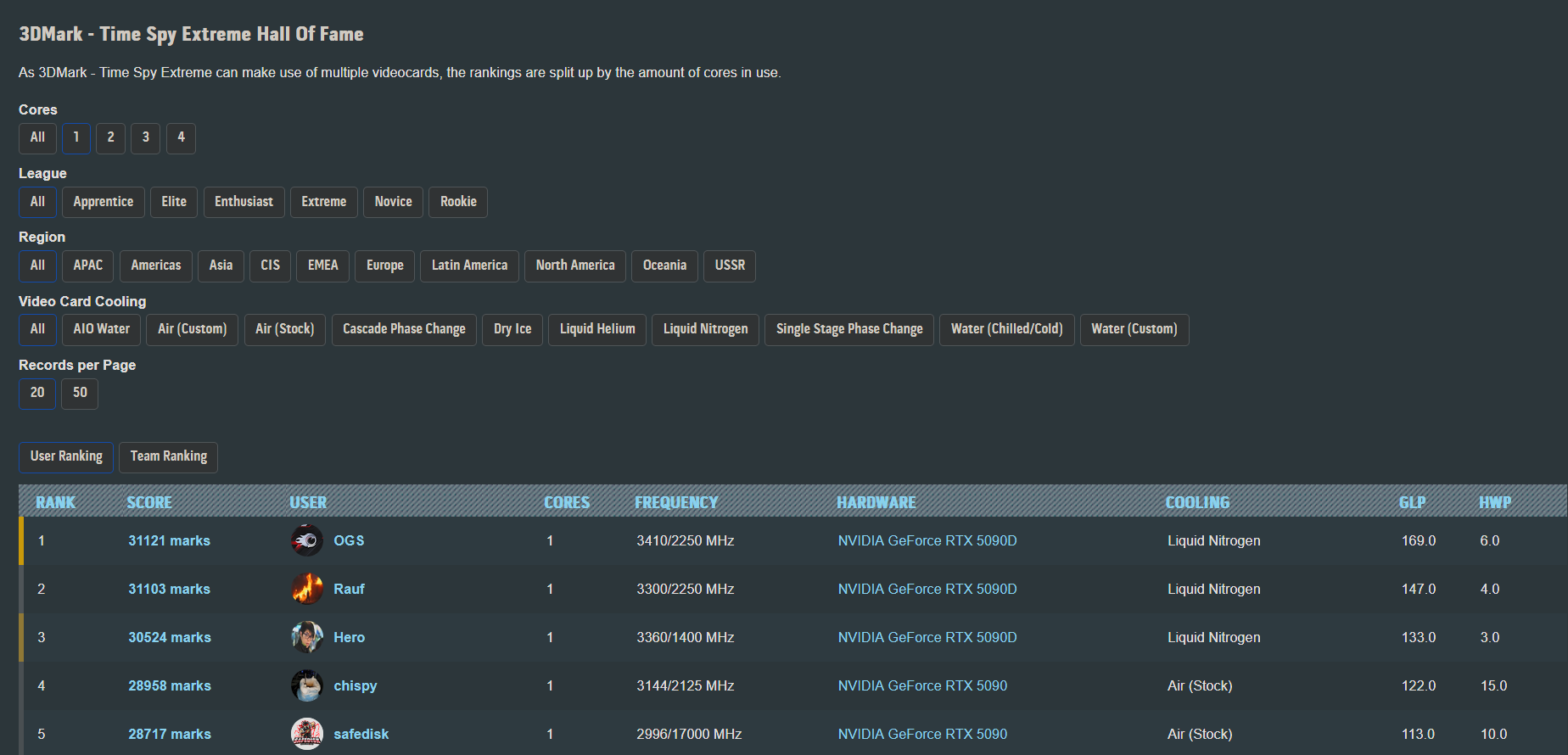
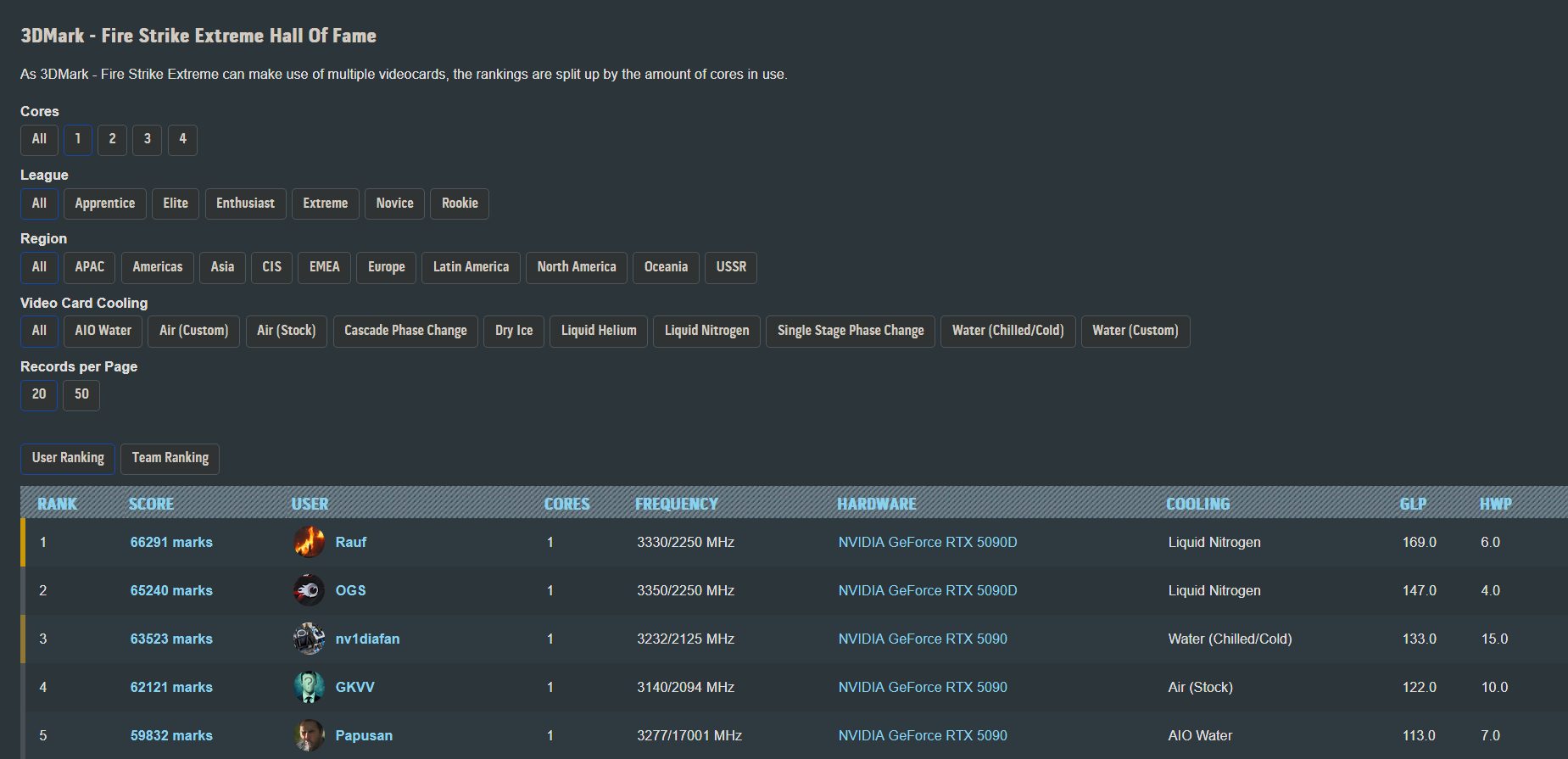
Galax has not introduced a global RTX 5090 non-D Hall Of Fame model, which explains why its Dragon counterpart reigns supreme in HWBot. As a matter of fact, there is currently no dual 16-pin RTX 5090 offering, perhaps influenced by the resurgence of melting GPU connector cases, something Nvidia claimed would be fixed with Blackwell.
There likely aren't many GB202 chips in supply, even for AIBs, explained by the existing supply constraints. Even if such a variant emerges, R&D, manufacturing, and chip costs, exacerbated by shortages, would likely drive street prices extremely high. It's worth noting that, apart from a few teasers, Galax has yet to formally introduce the 5090D HOF, and the card isn't even featured on their website. As long as these GPUs stay limited or until a global variant is introduced, the leaderboard probably won't change all that much.
Stay On the Cutting Edge: Get the Tom's Hardware Newsletter
Get Tom's Hardware's best news and in-depth reviews, straight to your inbox.

Hassam Nasir is a die-hard hardware enthusiast with years of experience as a tech editor and writer, focusing on detailed CPU comparisons and general hardware news. When he’s not working, you’ll find him bending tubes for his ever-evolving custom water-loop gaming rig or benchmarking the latest CPUs and GPUs just for fun.
-
beyondlogic be configured to deliver over 1,000W of power without board customizations. The PCBs of these GPUsReply
from the article please god dont. do they not have enough of these catching fire lol. even if its duel pin.
does it come with a free fire extinguisher. -
Pierce2623 So the top overclockers in the world are using LN2 to hit frequencies the 9070xt hits on air? I guess somebody somewhere might be impressed with that. I learned a long time ago that optimizing a good OC on air/AIO takes way more skill than LN2 number chasing.Reply -
Jabberwocky79 I'm starting to appreciate my 9070XT with triple 8-pin connectors more each day.Reply -
Konomi Reply
And you should also have learned that frequency alone is not everything. Sure, maybe the 9070XT hits higher frequencies on air cooling - but does that translate into it being vastly superior? Clock stretching is a thing, for example. Bigger number doesn't always mean better. Just something for you to think about.Pierce2623 said:So the top overclockers in the world are using LN2 to hit frequencies the 9070xt hits on air? I guess somebody somewhere might be impressed with that. I learned a long time ago that optimizing a good OC on air/AIO takes way more skill than LN2 number chasing. -
A Stoner Do the 5090D not use the same chips but with different firmware? If that is the case, then how is it possible that there are not enough chips to do this with the 5090? They are the exact same chips! So, supply as you argue is not what is limiting this.Reply
Perhaps someone in China subsidized the company to do this in order to have the ability to make the cards more performant and remove the drawback of the 30% nerf. Otherwise it does not make sense. -
thestryker I'm pretty sure this is just the dual power connectors doing the heavy lifting. I don't believe any other company has shown a dual connector model.Reply -
Pierce2623 Reply
Click stretching on GPUs…..Ok buddy. That’s literally only a thing in Zen2 CPUs. Of course a 370mm^2 die isn’t going to beat a 700mm^2 die on scores. Unfortunately the only thing impressive about Blackwell is the 5090 die size and the ability to scale to huge numbers of GPUs in a data center more easily than it has been in the past.Konomi said:And you should also have learned that frequency alone is not everything. Sure, maybe the 9070XT hits higher frequencies on air cooling - but does that translate into it being vastly superior? Clock stretching is a thing, for example. Bigger number doesn't always mean better. Just something for you to think about.